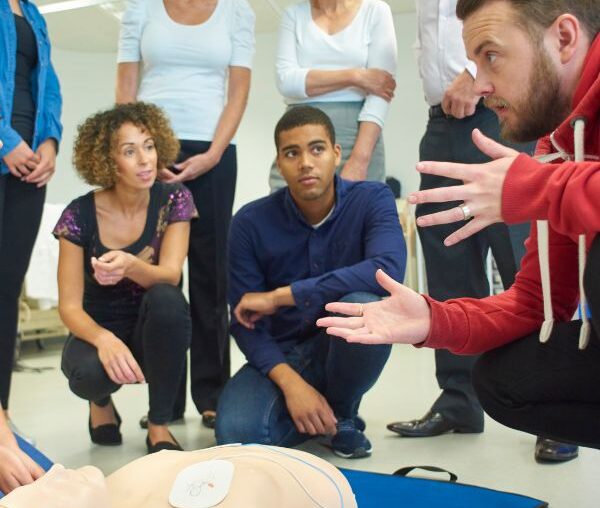Imagine you are in a restaurant, enjoying your meal, when suddenly someone starts choking. What would you do? Would you panic, or would you step up and save a life? This is where Basic Life Support (BLS) training comes in. A basic life support course in Canada equips you with the necessary skills to handle emergencies, perform CPR, and assist individuals in critical situations. Whether you’re a healthcare professional or someone who simply wants to be prepared, this training is invaluable.
What is a Basic Life Support Course?
A Basic Life Support (BLS) course is a specialized training program that teaches individuals how to respond to life-threatening emergencies. It includes techniques like:
- CPR (Cardiopulmonary Resuscitation)
- Using an Automated External Defibrillator (AED)
- Providing first aid for choking victims
- Recognizing signs of cardiac arrest
- Performing rescue breathing
BLS training is often required for healthcare professionals, but it is also beneficial for teachers, coaches, security personnel, and everyday individuals who want to be prepared for emergencies.
Why Should You Take a Basic Life Support Course in Canada?
Emergencies can happen anytime, anywhere. Taking a basic life support course in Canada can help you:
- Save Lives: Quick action can mean the difference between life and death.
- Boost Confidence: Knowing how to react in emergencies reduces panic and hesitation.
- Meet Workplace Requirements: Many jobs in healthcare, education, and security require BLS certification.
- Be an Asset to Your Community: The more trained individuals there are, the safer communities become.
Who Should Take a Basic Life Support Course?
BLS training is not just for doctors and nurses. Anyone can benefit from it, including:
- Healthcare professionals (nurses, paramedics, doctors, medical students)
- First responders (police officers, firefighters, lifeguards)
- Teachers and daycare staff
- Sports coaches and trainers
- Security personnel
- Ordinary citizens who want to be prepared
What to Expect in a Basic Life Support Course?
A basic life support course in Canada typically covers:
1. Understanding Emergency Situations
You’ll learn to assess a person’s condition and determine the best course of action.
2. CPR Techniques
- Adult CPR
- Child and infant CPR
- Hands-only CPR vs. traditional CPR with rescue breaths
3. Using an AED (Automated External Defibrillator)
An AED is a device used to restore a normal heart rhythm during cardiac arrest. You’ll get hands-on practice with using it effectively.
4. Choking Emergencies
Learn how to perform the Heimlich maneuver and clear airway obstructions.
5. Rescue Breathing & Bag-Valve Mask Ventilation
This technique is essential for individuals who are not breathing but still have a pulse.
6. Basic First Aid Skills
- Controlling bleeding
- Managing shock
- Positioning an unconscious person
Real-Life Example: The Power of BLS Training
Let’s take the example of Jake, a gym instructor from Toronto. One day, during a fitness class, an elderly man collapsed. Without hesitation, Jake started CPR while another gym-goer grabbed the AED. Thanks to Jake’s basic life support training, the man survived until paramedics arrived. This shows how BLS training can turn ordinary individuals into lifesavers.
How Long is a Basic Life Support Course?
Most basic life support courses in Canada last between 3 to 5 hours. Some courses are offered as a one-day intensive session, while others may be split into multiple sessions.
Where Can You Take a Basic Life Support Course in Canada?
Many organizations provide BLS certification in Canada, including:
- The Canadian Red Cross
- Heart & Stroke Foundation of Canada
- Local hospitals and healthcare training centers
- Community colleges and universities
Online vs. In-Person BLS Training: Which is Better?
- Online Training: Great for learning theory, but lacks hands-on practice.
- In-Person Training: Offers practical experience with CPR manikins and AEDs.
- Blended Learning: A mix of online and in-person training for flexibility and effectiveness.
How Much Does a Basic Life Support Course Cost?
The cost of a basic life support course in Canada varies but generally ranges between $50 to $150 depending on the provider, location, and course format.
Getting Your BLS Certification
Once you complete the course, you’ll receive a BLS certification valid for one to two years. After that, you’ll need to take a refresher course to maintain your certification and stay updated on the latest life-saving techniques.
Final Thoughts
Taking a basic life support course in Canada is one of the most valuable skills you can gain. Whether you’re a healthcare worker or just someone who wants to be prepared, learning BLS can make a real difference. Emergencies don’t wait, so why should you? Get trained, stay prepared, and be ready to save a life!
Ready to Enroll?
If you’re interested in taking a BLS course, check with the Canadian Red Cross, Heart & Stroke Foundation, or local training centers to find a class near you. Your decision today could save a life tomorrow!


